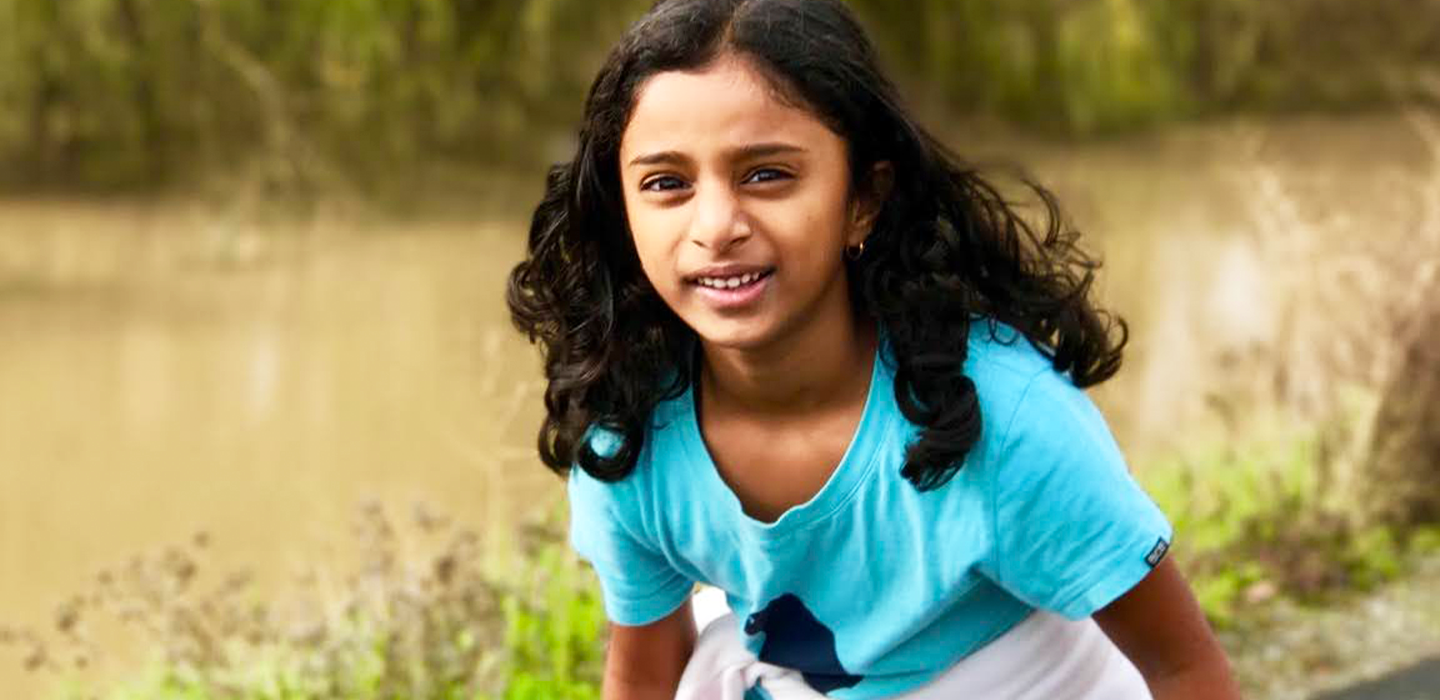Anaka: A Unique Road to Recovery

Anaka was barely 2 when the pain started – still too young to tell her parents that something was terribly wrong. Multiple procedures and nearly a decade later, she is finally on the road to recovery, thanks to a remarkable multidisciplinary effort at UCSF.
The discomfort began in 2011, shortly after Anaka underwent surgery to repair a hernia when she was just a year old. The pain gradually grew worse, and within a year, it was evident that her left leg was visibly shorter than her right and had begun to thin.
Anaka’s parents, Hari and Sapna, were distraught. Doctors were baffled. Anaka began to walk with a limp.
Hari and Sapna sought out a second opinion, then a third. Further examination revealed that their daughter’s femoral nerve had been damaged during the hernia surgery, impacting the growth and strength of her left leg. The injury was so severe that doctors thought Anaka might be permanently disabled.
“They said there was no chance to get it back to normal,” Hari recalls. “We didn’t know what to say. We were so low. We began to lose hope."
In 2014, a friend referred the family to a neurologist at UCSF Benioff Children’s Hospitals, where Anaka was examined by a multidisciplinary team of doctors. The neurosurgery team had a plan: repair the femoral nerve by removing the damaged tissue and replacing it with healthy nerve from another part of Anaka’s body.
The surgery was a success. The pain began to subside. Hari says that it was at that moment that his faith began to grow again.
A Unique Approach
That was just the beginning of Anaka’s journey with UCSF. After the nerve graft procedure, she was referred to physical therapy, where she underwent years of treatment and observation before she was ready for the final step: orthopedic surgery to straighten and lengthen her leg.
In 2019, the family was referred to Sanjeev Sabharwal, MD, MPH, an orthopedic surgeon with more than 25 years of experience who had recently begun his practice at UCSF and established the Limb Lengthening and Reconstruction Center at UCSF Benioff Children’s Hospital in Oakland. Dr. Sabharwal was immediately struck by the extraordinary nature of Anaka’s treatment journey – a journey that he believes would not have been possible anywhere else.
“What I find so unique in our program is that we have both the breadth and the depth,” he says. “It’s always a team approach – she started with neurosurgery, and then came to orthopedics where she had access to rehabilitation, physical therapy and surgery. The fact that Anaka could do all of this in house is amazing.”
In 2020, it was Dr. Sabharwal’s turn. He conducted two cutting-edge procedures to straighten and then lengthen Anaka's damaged leg. The surgeries employed one of the most groundbreaking techniques in orthopedics: inserting a magnetized lengthening device into the center of the bone and slowly lengthening the leg over a period of months using an external remote control connected to the magnet.
“This is new technology, and we want this kind of care to be available to local kids like Anaka, as well as children who are out of state, from other regions, across the country, and even the world,” Dr. Sabharwal says. “We want this to become a destination program.”
A Grateful Family
After a decade struggling through her injury, Anaka is finally seeing possibilities where there had once only been limitations. She has started swimming and riding a bike. She’s back at school. And she loves to dance.
Hari and Sapna are in awe of her emotional strength, despite everything. Sometimes they still find themselves reeling from the years of stress and worry. But most days, as they watch their child gain confidence and enjoy her life, they find themselves overwhelmed with gratitude.
Shortly after Anaka’s second surgery, the family decided to pay that gratitude forward, making a contribution in Dr. Sabharwal’s name to UCSF’s Institute for Global Orthopedics and Traumatology, which addresses global disparities in orthopedics, including trauma care in children and adults, through training and education.
“There are so many kids facing complex situations like this – we see them every time we go to the hospital and it brings up so many emotions for us,” says Hari. “So whatever small thing we can give to the hospital and the doctors helping children like ours, we want to do it.”